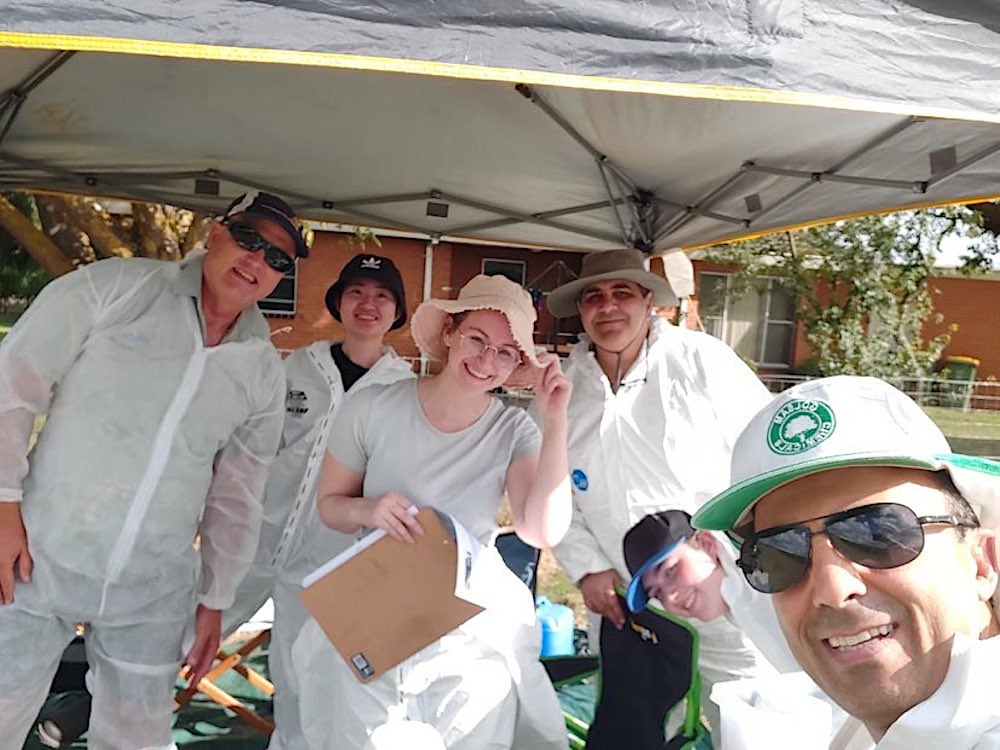Agriculture Victoria has appointed insect expert Dr Jessica Henneken to lead its phylloxera research, which aims to understand more about the biology and control of this significant grapevine pest. In Victoria, phylloxera is known to exist in six Phylloxera Infested Zones (PIZ).
Jessi, a Victorian native, has a Master’s degree and PhD in science from the University of Melbourne, where she focused on zoology and animal behaviour.
“I did my postgraduate research on silk chemistry, looking at how spiders use chemicals in their silk to communicate with one another and to attract prey,” Jessi said.
That led to an internship with Agriculture Victoria in 2017 working on Queensland fruit fly trapping techniques. “Queensland fruit fly use chemicals to find fruit and I was looking at how we can use chemistry to take advantage of that to attract female flies to traps,” Jessi said.
“One of the many things that’s interesting about working with insects is they behave differently in different environments, so management practices that might work for an apple orchard might not work for a vineyard. The interactions between environment and behaviour are fascinating.
“I loved working with growers, and I loved applying science to real-world problems, so when the internship finished and there was an opportunity to continue working at Agriculture Victoria, I took it.”
Jessi’s first phylloxera project involves studying different detection methods, which is part of a three-year project called ‘Integrated management of grapevine phylloxera phase II’.
“I was comparing visual detection, which involves physically digging up the roots and looking for phylloxera, to molecular detection using DNA sampling, over different months of the year,” she said.
“Our aim is to be able to provide advice to vineyard owners and biosecurity agencies about when in the season to use different detection methods and how you can use different methods together to give you the best chance of finding phylloxera.”
During this project, Jessi and a team of volunteers visited a phylloxera infested vineyard to dig up roots and look for phylloxera.
“It was really nice to get my hands dirty and I was really lucky to have a grower who was happy for us to study his vineyard,” Jessi said.
Phase two of the ‘Integrated management of grapevine phylloxera’ project is due to finish in June 2024 with findings reported to Wine Australia. The project leads on from the project ‘Integrated management of grapevine phylloxera phase I’ and includes research on:
- Phylloxera detection
- The prevalence of leaf-galling phylloxera
- Characterisation of leaf-galling phylloxera genotypes
“There’s also some work on disinfestation in the project, looking at how soil and plant contamination might impact the dry heat disinfestation of machinery,” Jessi said.
“We’re also looking at potential biocontrol agents for phylloxera, trying to find some predators of the pest. A review on phylloxera biocontrol showed scope for the potential release of natural enemies from the pest’s native range, commercially reared predatory insects, and the application of insect-killing microorganisms such as nematodes and fungi.
“The big picture is trying to help growers and communities in their pest management practices and ideally leading to a more sustainable way of managing pests and diseases. This is very fulfilling and rewarding work and a very exciting space to be in.”
To find out more about Agriculture Victoria phylloxera research click here.
